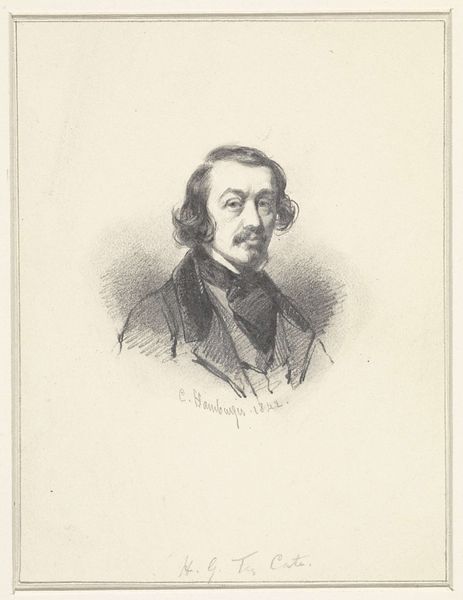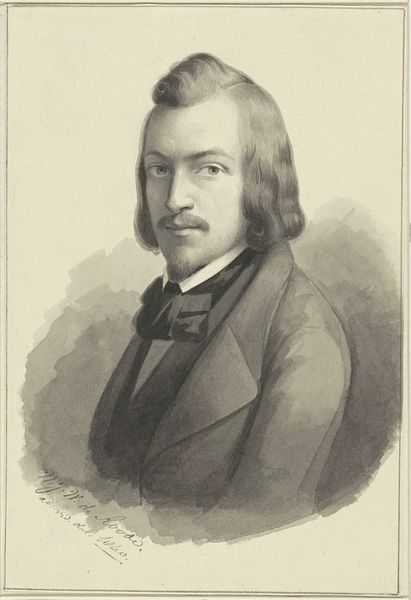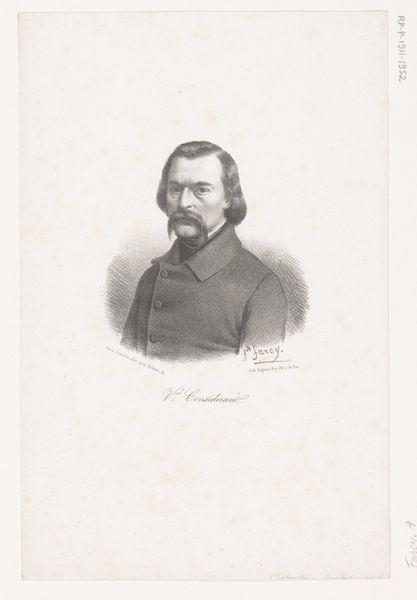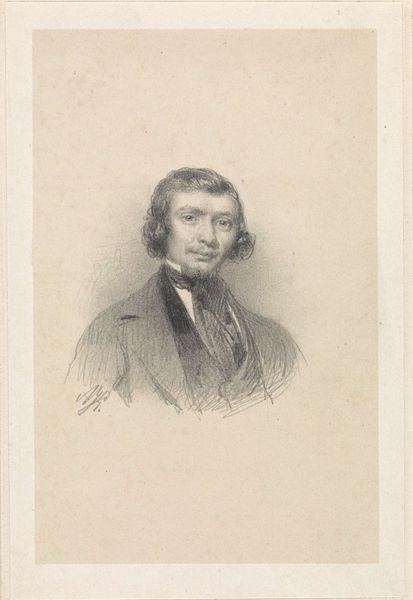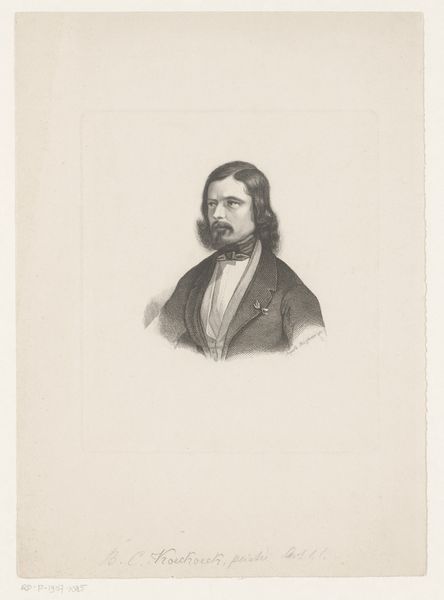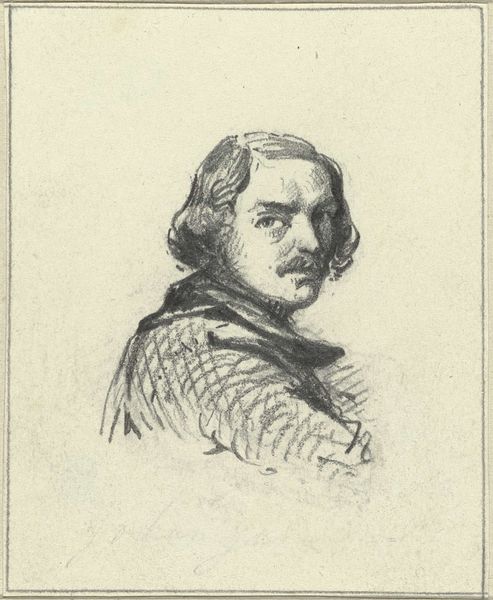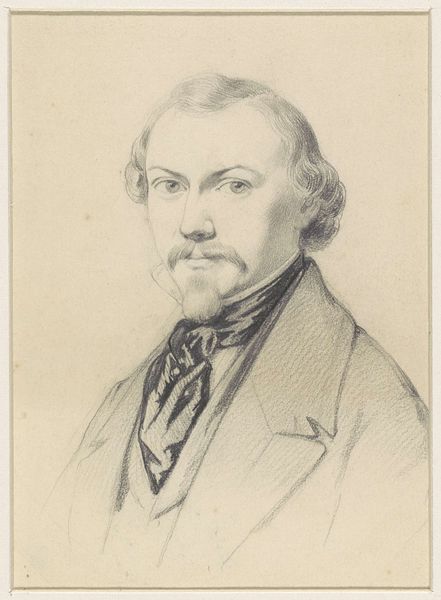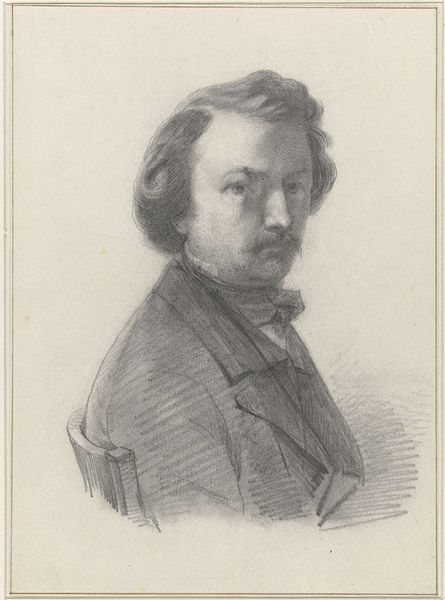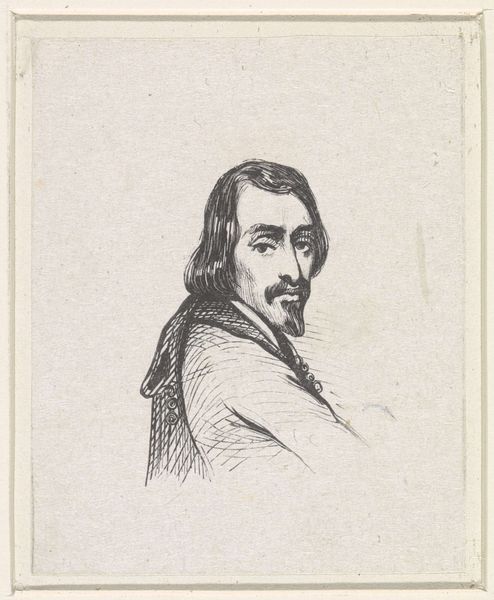
drawing, pencil, graphite
#
portrait
#
pencil drawn
#
drawing
#
self-portrait
#
figuration
#
pencil drawing
#
romanticism
#
pencil
#
graphite
#
portrait drawing
Dimensions: height 120 mm, width 89 mm
Copyright: Rijks Museum: Open Domain
This self-portrait of Petrus De Vigne is rendered in graphite on paper, a humble but highly versatile medium. Graphite, in its essence, is pure carbon, the same stuff as diamonds and coal, but here it's used for capturing a likeness. Look closely, and you’ll see how De Vigne uses delicate, almost shimmering lines to define his features, employing hatching and cross-hatching to build up tone and volume. The very act of drawing, of applying graphite to paper, is an intimate, painstaking process. It requires intense concentration and careful control. In the 19th century, the rise of industrialization made drawing materials more accessible, yet the skill required to create a compelling portrait remained highly valued. De Vigne, through his mastery of this medium, elevates the craft of drawing to the realm of fine art. Consider the social context: portraiture was often commissioned by the wealthy, but here, De Vigne takes control of his own image, asserting his identity through the labor-intensive act of drawing. This small work invites us to appreciate the subtle artistry and the inherent value in the hand-drawn image.
Comments
No comments
Be the first to comment and join the conversation on the ultimate creative platform.

